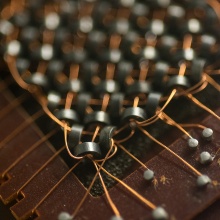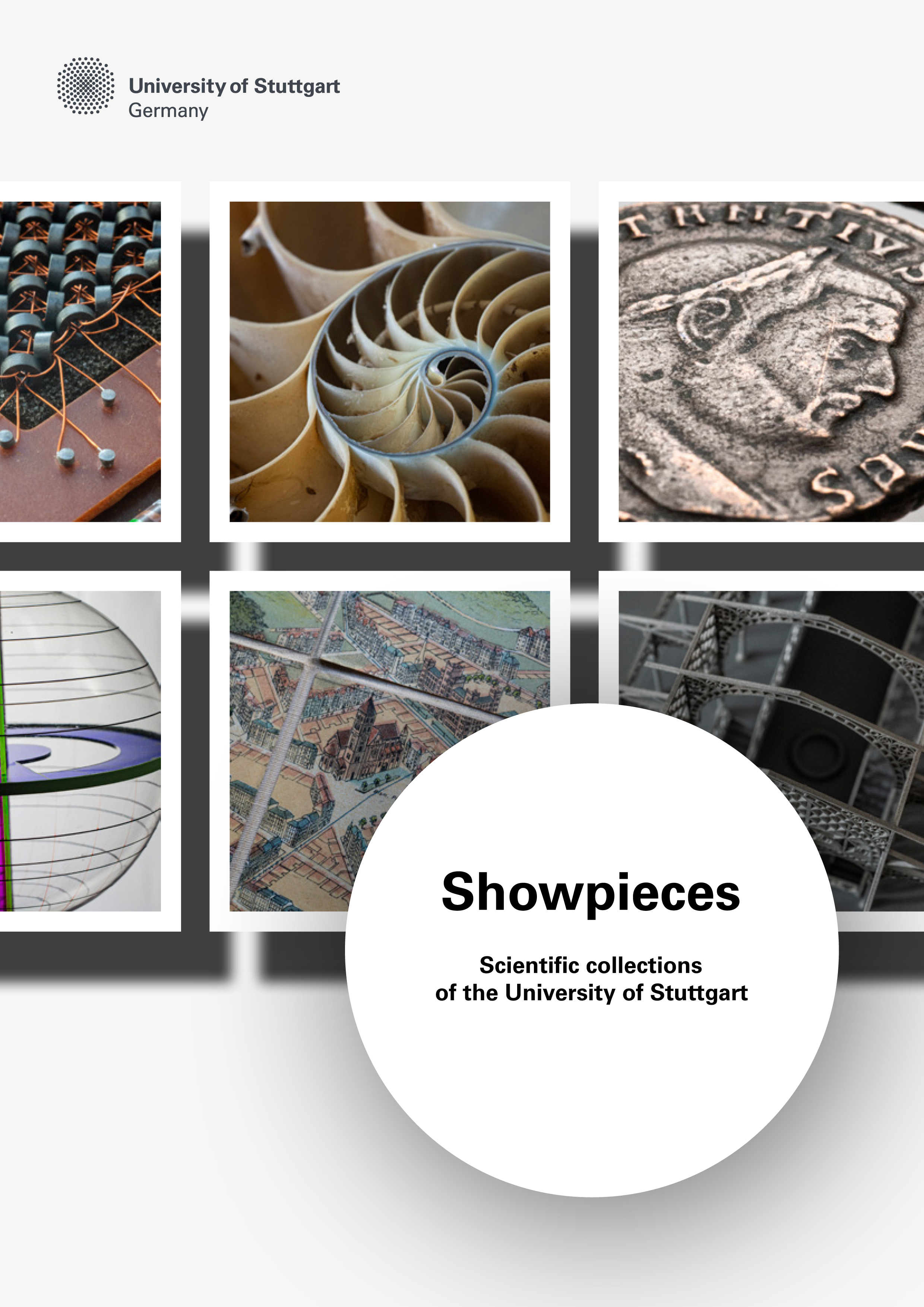Goals of the Network
The „University of Stuttgart Collections Network“ is an association of contact persons for collections at institutes and central facilities. The goal of the network is to have a platform for the common exchange about challenges of collection curation as well as for the realization of joint interdisciplinary projects. Founded in 2020 by the University Library and the Institute of History, Section for History of Science and Technology, the network meets once a semester. Other interested parties are welcome to join at any time. Contact us!
Network Projects
Lectures Series „Show and Talk“
at the Studium Generale of the University of Stuttgart in the summer term 2024
Exhibition: Collection objects - evidence of excellent research
in the Rector's Office and the University Library
Publication: Showpieces – Scientific Collections of the University of Stuttgart
Further Cooperation Projects
BMBF-Project Gyrolog – Building a digital gyroscope collection for historical and didactic research (2017-2020, Chair of Flight Measuring Technology, Institute for Parallel and Distributed Systems, Institute of History, Section for History of Science and Technology): supported by the University Library
Virtual Exhibition 2021 (DE): Bucharchitekturen. Ein virtueller Blick in die historischen Bestände des Instituts für Architekturgeschichte (Book Architectures. A virtual look into the historical holdings of the Institute of Architectural History)
Exhibition "At Second Glance: Ramblings through the Collections of the University of Stuttgart" - developed from a teaching project of the Institute for the History of Architecture (Else Schlegel, M.A.) and the Institute of History - Chair for the History of Natural Sciences and Technology (Dr. Beate Ceranski, M. Sc. Maria Niklaus) in WiSe 2021/22.
Theo Lutz: Stochastic Texts. From the Freiburg Code to the Stuttgart Code.
Theo Lutz was one of the first in the world to succeed in randomly producing a text with a computer. In June 2022, Klemens Krause, Christian Corti and Dr. Toni Bernhar (Institute for New German Literature) reproduced Lutz's experiment on an LGP-30, a computer from 1958, in the Computer Museum, a cooperation with the German Literature Archive Marbach, where the original program from 1959 was discovered.
Contact to the Network
Coordination:
apl. Prof. Dr. Beate Ceranski, Institute of History, Department of History of Science and Technology
Dr. Christiane Rambach, University Library, Digitization and Conservation
Project "Kompetenzzentrum Sammlungen"
Dr. phil. des. Katharina Korhon, University Library
Webmaster/Mediaproduction:
Dipl.-Wirt.-Ing. (FH) Katja Stefanie Engstler, Department of Mathematics, Institute of Geometry and Topology
Contact the group
University of Stuttgart Collections Network
- Write e-mail
- Contact: Prof. Dr. Beate Ceranski, Dipl.-Wirt.-Ing. (FH) Katja Stefanie Engstler, Dr. Christiane Rambach



